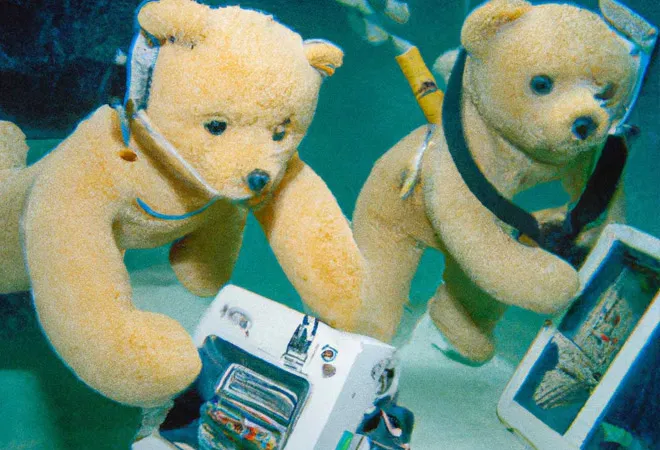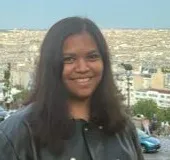
For the longest time, the relationship between humans and technology was premised on the belief that creativity, independent thinking, and art are what set humans apart; that technology, even at its sophisticated best, will always be a tool.
Ada Lovelace’s rhetoric on this is a powerful case in point: If computers can only do what they are programmed to do, how can their behaviour ever be called creative? Through her work and research, she had emphasised that independent learning is an essential feature of creativity. She held the view that technology would never be able to engage in independent learning.
The
recent rise of commercially available Generative AI or gen-AI, provides an interesting and compelling counter to Lovelace’s research.
Generative AI is an AI system that is trained on open-source content and historical data sets to generate new and unique creative outputs. The wide range of commercially available gen-AI tools that have appeared over the last year is designed with the intention of automating and independently executing an array of tasks that have historically been associated with human capacity. With private capital and public adoption of new gen-AI products like OpenAI’s image generation tool
DALL.E 2 and chatbot
ChatGPT, Stability AI’s photo-realistic image generator
Stable Diffusion, photo editor application
Lensa and others, not only does gen-AI augment human-like creativity, it also becomes easily accessible at scale.
 The Generative AI application landscape as it currently stands, compiled by Sequoia Capital
The Generative AI application landscape as it currently stands, compiled by Sequoia Capital
Creativity: Gen-AI VS Humans
The explosive growth of Big Tech and revolutionary technologies has led to a
‘techlash’, which is set to worsen with generative AI. Since gen-AI makes it murkier to understand and recognise what is human versus what is AI, it requires us to reframe our understanding of technology, creation and communication. The notion of creativity has followed this trust deficit, and gen-AI has often been characterised as a
hindrance to many creative industries.
As an example, gen-AI art algorithms and machine learning systems are
trained on the datasets of object recognition, different schools of arts, and works of human artists to produce new art pieces based on given prompts (such as the cover image for this article). The gen-AI algorithm borrows artistic styles and imaginations of artists to produce an entirely new piece of work that could be attributed to the AI system. This is often done without the original artists’ consent and without giving the artists due credit and/or monetary compensation. As a result, artists and other creative professionals perceive gen-AI to be an existential threat to not only their industry, but also to the bedrock of a very ‘human’ skill.
How justifiable are these concerns, and does gen-AI actually pose a threat to human creativity? Since we aim to explore this question in this article, we wanted to ensure that our analysis was not unilateral. We thus headed over to
ChatGPT to get its ‘opinion’ on this, and asked it two questions—‘What is the difference between humans and AI in terms of creativity?’, and ‘In the age of generative AI such as yourself, what does it mean to be human?’
The gen-AI algorithm borrows artistic styles and imaginations of artists to produce an entirely new piece of work that could be attributed to the AI system.
Below are the responses we received from ChatGPT for both questions respectively:


ChatGPT and many similar tools function on a model of
Reinforcement Learning from Human Feedback (RLHF) where a human trainer was ‘in the loop’ during the development of the application, quantifying the accuracy of their responses and ranking them by preference to train them to produce a certain type of response based on the inputs they receive and the outputs they generate. So while the answers and artworks generated by gen-AI tools like ChatGPT are ‘new’ in the sense of their composition, it is important to remember that these tools essentially
aggregate material that they have been trained to find,
derive information from it, and repackage it in a different format to
create something novel.
Although ChatGPT can give us a never-seen-before plausible-sounding summation of points in response to complex questions in an eerily humanistic syntax, it cannot replicate the human attributes of actually creating anything—it cannot be inspired, contextualise material, or draw meaning from its ‘creations.’
Similar arguments have been made for other generative AI tools like image generators, and the outraged hype around gen-AI’s purported creative scope is slowly settling down into the majority opinion that it cannot be meaningfully pitted against genuine human creativity.
Creativity: Gen-AI and Humans
Regardless of the introduction of gen-AI, the relationship between creativity and art on the one hand, and recognition and monetisation on the other, has been complicated. Many remarkable artists from across the world and history have never received the recognition due to them, or compensation for their creativity, in their own lifetime. However, with the recent rise of the creator ecosystem, Web3 companies for the first time are trying to
augment the correlation of art and creativity with financial outcomes through NFTs and novel digital assets. This ability for creators and artists to monetise has seen a direct relationship with the pace of growth of commercial AI, and now, generative AI. This trend provides an interesting perspective on thinking about the future of creativity, and lends to the possibility of two key themes.
The first is that for leading creators and artists across the world, generative AI could act as a tool that will augment their artistic abilities. It will help them engage at a deeper level with their creations, and experiment and iterate rapidly. Projects like
the AI Art House are already leading the way in this nascent domain by enabling artists to use
generative adversarial networks (GANs) to scale and monetise their creations.
The use of gen-AI in such contexts already indicates the start of a systematic process in which the works of creative professionals may be co-opted to produce new content and creations, potentially without sharing the monetary and other benefits associated with them.
A second trend is that we could have a minimum standard benchmark of creativity. There will be a base-line established when it comes to communication and creativity across formats of writing, speaking, coding, illustrating and copy writing that will help humans focus on adding specific layers of personalisation and emotions. In most cases, communication, creation, and creativity are done with an intention of eliciting an emotion or an action. Often, limitations of language and talent prevent humans from focusing on that, but with gen-AI, every person will have basic access to tools of human-like communication that they can then use to augment interaction.
The way ahead: Regulation of Gen-AI
While the jury is still out on how gen-AI will affect creative endeavours and the human experience writ large, it is safe to assume that its mass adoption is inevitable and fast-approaching. Therefore, along with thinking about the future of creativity and human-technology interaction, a parallel dialogue on the ethics of monetisation and intellectual property rights is important.
This process also needs to pick up pace, since gen-AI is already disrupting ownership decisions and patterns.
South Africa recently decided to grant a patent to an AI-based ‘creativity machine’ called DABUS (device for the autonomous bootstrapping of unified sentience) for designing more efficient food containers, and
India recognised a gen-AI tool called RAGHAV as a co-author of a copyrighted artwork. The use of gen-AI in such contexts already indicates the start of a systematic process in which the works of creative professionals may be co-opted to produce new content and creations, potentially without sharing the monetary and other benefits associated with them. While the ideal vision for gen-AI is to act as a tool to enable new layers of creativity, it will be an arduous feat to achieve until we can design policy and regulatory mechanisms to acknowledge and compensate for the centuries of human talent that have gone into training current gen-AI models.
Considering that many jurisdictions around the world are currently developing their own AI laws, policies and strategies, gen-AI is not a completely foreign concept. It features marginally and implicitly in policy language under umbrella terms like ‘
deep synthesis technologies’ (China’s upcoming deepfakes regulations) and ‘
high-risk AI’ (EU’s impending AI Act).
But there has yet to be explicit regulation of generative AI as a standalone issue, either specific to the creativity landscape or otherwise. There is currently
no certainty around either creative ownership and copyright questions intricately linked to the functioning of generative AI, or the reparative/punitive measures to be taken in case creative professionals are advertently or inadvertently taken advantage of.
These are issues that will need to be addressed to ensure that gen-AI can be used in harmonious conjunction with humans, and not as stochastic technologies against our interests.
The views expressed above belong to the author(s). ORF research and analyses now available on Telegram! Click here to access our curated content — blogs, longforms and interviews.



 For the longest time, the relationship between humans and technology was premised on the belief that creativity, independent thinking, and art are what set humans apart; that technology, even at its sophisticated best, will always be a tool.
For the longest time, the relationship between humans and technology was premised on the belief that creativity, independent thinking, and art are what set humans apart; that technology, even at its sophisticated best, will always be a tool. 


 PREV
PREV



